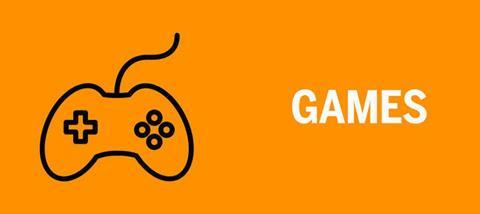
Subscribers only: Download as a PDF here.
“Getting to know you, getting to know all about you…” Nope, this issue’s games aren’t based on Rodgers and Hammerstein’s musical The King and I. It’s the start of a new academic year, so here are some games to help the children and young people in your groups get to know each other better.
WEAVING A WEB
You will need: a ball of wool
This game is suitable for younger children. Sit the children in a circle. Keeping hold of the end of the wool, throw the ball to some- one else in the circle. As you do so, say your name and the name of the child you’re throwing the wool to. That child then holds on to the string of wool while throwing the ball to someone else, saying their name and then naming the next child. This continues until everyone is holding onto part of the wool and you have created a web of wool between you. You could even work in reverse to roll the wool back up again.
GIANT GUESS WHO
You will need: names of all the group members written on separate cards; Post-it notes in two colours
Ask for two volunteers and get them to choose a card with some- one’s name on. Give each volunteer one colour of Post-it note.
Arrange the other group members around the room and give them both colours of Post-it note to hold in the air, one in each hand.
Each volunteer has to guess which person the other volunteer has on their card before that other volunteer guesses theirs. They ask questions such as: “Does this person have blond hair?” or “Is this person wearing a dress?” Depending on the answer, they should go around the room, taking away the Post-it notes of their colour from the people who don’t match the answer to their question. So if the person on the card has blond hair, remove the Post-it notes from all the people in the group without blond hair. The first person to guess correctly is the winner! Play as many times as the children want to.
WHICH ONE’S ME?
You will need: sheets of paper; felt-tip pens; Blu Tack or sticky tape; Post-it notes
This game is for older children or young people. Give out sheets of paper and felt-tip pens, then ask everyone to design a poster about themselves without putting their name on the paper. They should try to do this without anyone seeing; encourage everyone to spread out so they can’t be overlooked as they draw. Give the group enough time to do this and then gather the posters in.
Stick the posters up around the room, then challenge everyone to guess which poster belongs to which group member.
They should write names on Post-its and stick them to the posters. Once everyone has decided, go around the posters to see how many people have guessed correctly.
CLAP CLAP
This game is appropriate for younger children. Stand in a circle and get a simple clapping rhythm going. Once the children get the hang of it, introduce these phrases:
“My name is [insert name]. Clap, clap. And I like [insert interest].
Clap, clap.”
Then the next person in the circle has a go. Once you’ve gone all the way round the circle, clap and cheer, thanking everyone for taking part. Challenge the children to remember everyone’s name and what their interests and hobbies are.
FIND SOMEONE WHO
You will need: bingo card featuring facts about everyone in the group; pens
An absolute classic, this game is ideal for older children or young people. Before the session, ask members of the group to share a fact about themselves. Put all of them onto a bingo card and make enough copies for everyone in the group to have one.
Give out the cards, then encourage the group to find the right person for each fact and ask them to sign their card. The first person to match all the right facts to the right people is the winner.
TWO TRUTHS AND A LIE
Another classic game. Ask everyone in the group to think of two facts about themselves and one false fact. Examples could include: “I’ve climbed to the top of Snowdon”, “My grandmother was in Coronation Street” or “I can burp the alphabet”.
Sitting in a circle, each person shares their three ‘facts’ and everyone else in the group has to decide which is the lie.
FACT, FACT, FACT
This version of ‘Duck, duck, goose’ is suitable for children and young people of all ages. Sit in a circle on the floor. Share a fact that you know is true for at least two people in the group, such as: “You go to Manchesterford Primary School.” The people for whom that fact is true have to get up and run around the circle, then back to their place. The person who gets there first earns a point. Keep going until you run out of time or facts. The person with the most points is the winner.
You could adapt this to fit the game ‘Fruit salad’. Sit the group in a circle of chairs, with a chair for each person, minus one. The person without a chair stands in the middle and calls out a fact that relates to some of the people in the group. The people to whom that fact applies have to run to a different chair, while the person in the middle has try to sit in one of the vacated chairs.
Supporting documents
Click link to download and view these files1004372.pdf
PDF, Size 0.34 mb






































